Trekking Accommodation in Everest Region – A complete guide
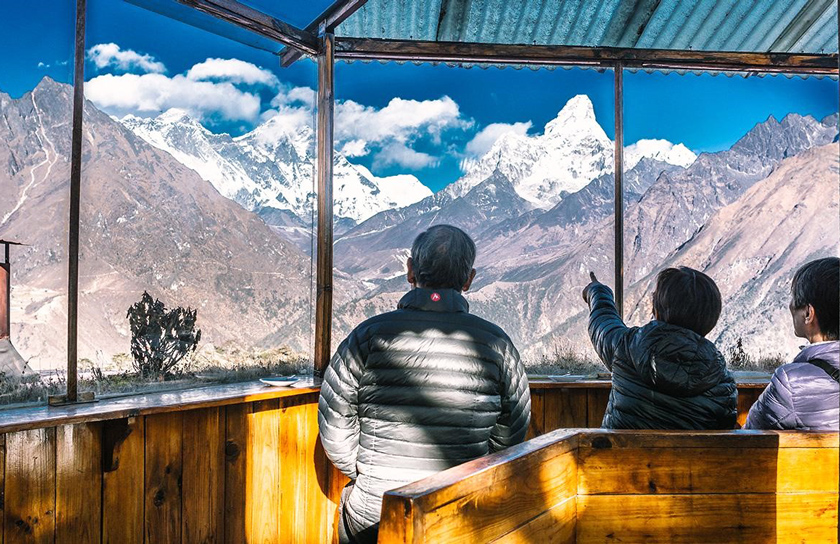
The Everest region of Nepal hosts one of the most popular hiking trails in the world, Everest Base Camp. Likewise, there are high passes, glacier lakes, several climbing peaks above 4,000 m and high mountains above 8,000 m for mountaineering expeditions.
As thousands of travelers hike in the Everest region every year, the accommodation conveniences have been upgraded a lot. The path to Everest Base Camp takes travelers through multiple days’ journey in the trails, where an array of teahouses and hotels are enjoyed for food and accommodations
Teahouses
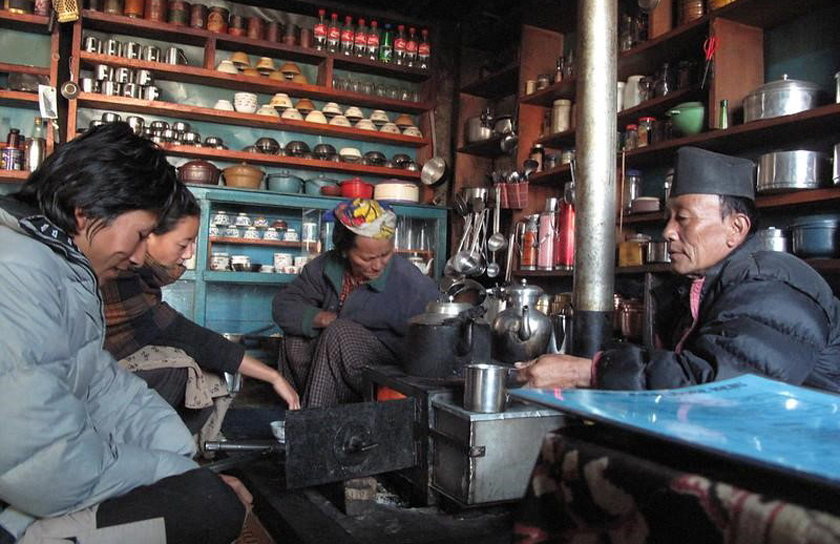
Once, teahouses were the only available options in the mountain trails. It refers to a place where trekkers can stop and rest to have a cup of tea. Mostly, the local family owns and manages the teahouses.
One of the most preferred ways for trekkers to experience trekking in Everest region is to stay at teahouses along the trekking routes. They don’t have to worry about carrying food and camping equipment for hiking. Not only this, but also it offers them an opportunity to witness the daily lives and culture of Sherpa people living in the mountainous region of Nepal.
The conveniences offered at teahouses and their standard vary from place to place. In general, the comforts offered will be basic and functional in more remote and less visited regions. Nowadays, you will find teahouses that look more like guest houses offering a wide range of food options, rooms, and other essentials like Wi fi, hot showers, and solar electricity.
Hotels
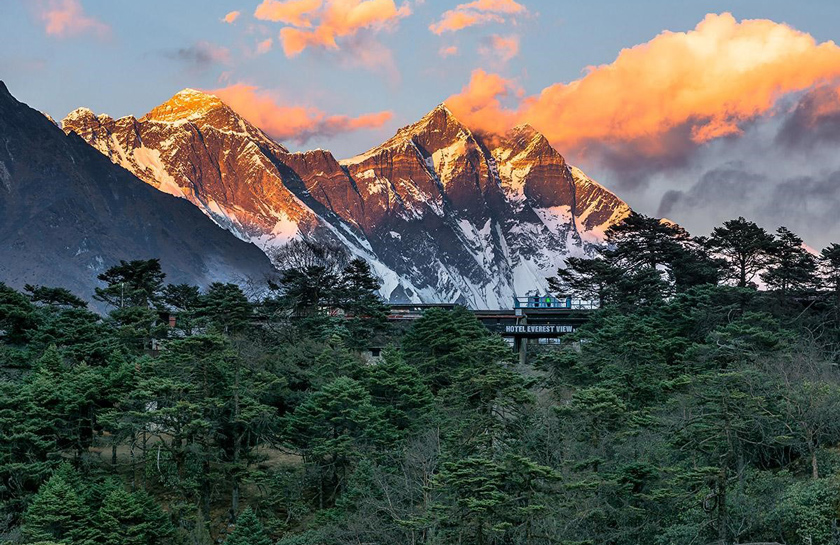
With the popularity of trail, the number of high end and mid-range hotels are growing in numbers in the Everest region. There are different classes and categories of hotels and lodges offering unique experiences of a perfect holiday to the visitors.
Mid range Hotels
The mid range hotels and lodges are well managed and provide well equipped facilities than teahouses. Trekkers can enjoy delightful hospitality and a wide variety of food choices from the menu. The room is spacious with comfortable beds and mattresses. The restroom is attached with a hot shower. In general, the mid range hotels offer a unique blend of facilities at a reasonable price.
Luxury Hotels
Luxury hotels are the perfect choices for travelers who do not want to compromise comfort and luxury while trekking in the Everest region. Amid the beauty of soaring mountains, luxury hotels make a genuine difference in every aspect in the trek. You can relax and rejuvenate in the hotel to create your memorable holidays.
There are high end hotels in several towns of Everest region like Lukla, Namche and Dingboche, committed to offer the best services and amenities for guests. The Hotel Everest View in Syangboche, Everest Summit Lodge in Monjo, and chain of Yeti Mountain Home are some marvelous places to stay on the Everest trail.
They provide exceptional holistic experience to guests with a wide variety of food and beverage services, spacious room and impeccable services delivered by expert hosts. The rooms boast an ensuite bathroom with hot and cold running water. Besides, you can find other essentials like thick quilts, room heaters, electric mattress pad to keep you warm during your stay.
What to expect during your stay in the Everest region?
Food and drinks
The food menu is consistent and the price range is similar and affordable in most places in the Everest region. Most importantly, it is a norm to dine dinner and breakfast in the same teahouse and hotel where you stay overnight as it supports local families to generate some income.
Teahouses and mountain lodges on the trails serve breakfast, lunch and dinner along with a variety of dishes. Particularly, all teahouses breakfast includes eggs, potatoes, toast, Tibetan bread etc. with hot drinks. Likewise, for lunch and dinner, they serve dal (lentil soup), bhat (steamed rice) and tarkari (vegetable curry).
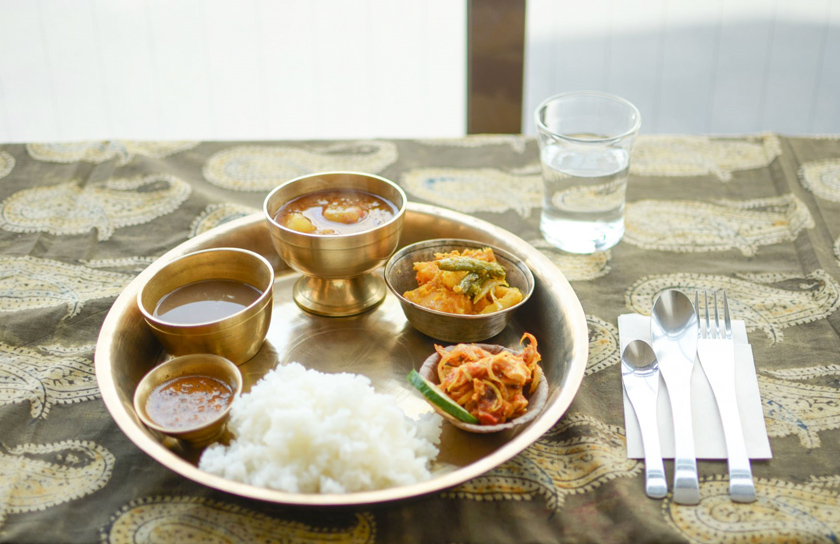
Trekkers in the know are familiar with the popular catchphrase “Dal bhat power 24 hour”, being a staple food of our country. The vegetarian meal is highly nutritious and gives you all the energy required to accomplish an arduous trek in the Himalayas.
Some popular trail snacks in teahouses are tea, coffee, biscuits, chocolate bars and bakery items. Besides, their standard menu includes a variety of food dishes like momo, pasta, chowmein, noodles, pancakes, garlic soup and many more.
Interestingly, you can have cakes, apple pies and cookies in most places. Having a black tea, lemon tea, and ginger lemon honey are the best ways to beat cold for trekkers during the trek.The hot water is available at teahouses for an extra charge which is the most essential to keep you hydrated and protect from altitude sickness.
You will find meat dishes in some menus and may not be available everywhere. For religious reasons, killing is strictly prohibited in Khumbu region, and meat is brought from other villages which are not refrigerated properly. So, it is better to cut down meat for health reasons on the trek.
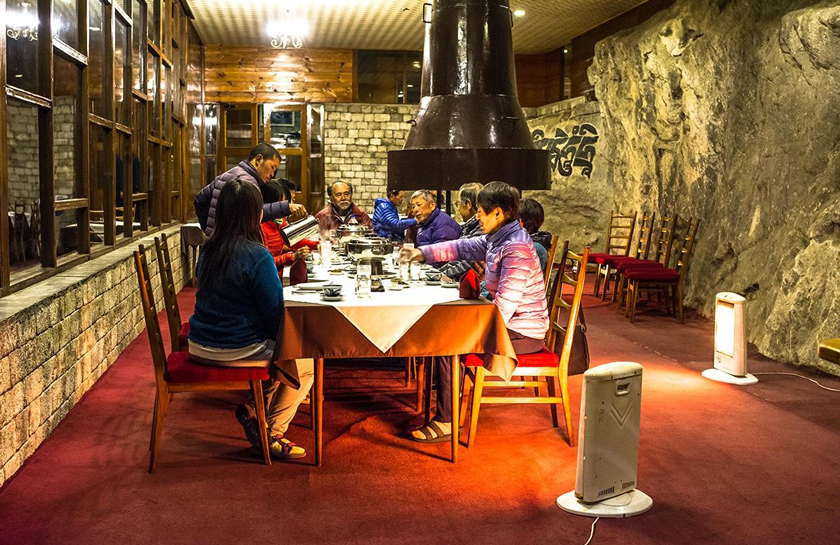
Likewise, the luxury hotels serve freshly made cuisines that include Nepali, Continental, Asian and Western delicacies prepared by professional chefs. Moreover, you can fly in the comfort of a helicopter ride to enjoy a lavish breakfast in a luxury hotel further enhanced by stunning views of Mount Everest and neighboring peaks.
Accommodation
The accommodation conveniences available vary with the altitude you are at and the prices you pay. Mostly, teahouses and hotels at lower altitude regions upto Namche are well equipped with internet, electricity supply, attached bathroom and toilet. However, the room facilities will be basic and functional as you reach higher elevation.
Staying at teahouses is relatively cheap and you will find basic rooms and dormitories style on a twin sharing basis. The price of your accommodation will vary depending on the teahouse and hotel, ranging from USD 20 – USD 200.
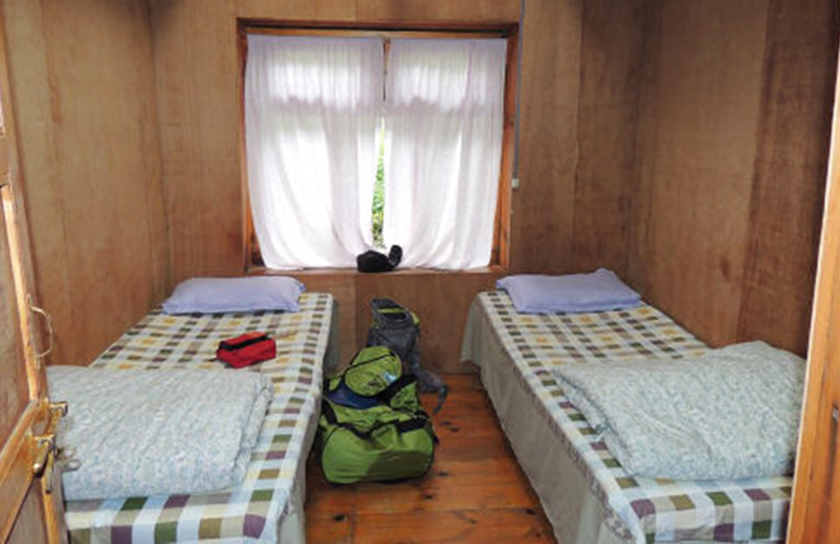
Rooms on teahouses usually include a bed sheet, mattress, quilt or blanket, pillows, bedside table, carpet flooring for your convenient stay. Some trekkers prefer to bring their own sleeping bag for hygienic reasons.
Likewise, rooms at mid range and luxury hotels are well furnished with all the amenities. This includes Wi-Fi, room heater, thick quilts, electric mattress pad, western toilet, attached bathroom with hot shower.
It might be difficult to find accommodation especially during peak trekking season; especially spring (March, April, May) and autumn (September, October, November) for independent trekkers and small groups. So, it’s always prudent to trek with a trekking agency as they ensure it ahead before the trek commences.
Toilet and Sanitation
Toilet facilities and sanitation are well managed in teahouses and hotels. As most of them are family run businesses, they make sure that sanitation is not an issue at all. Not all regions are equally clean, some remote regions at higher altitude are reasonably maintained in terms of cleanliness.
Most hotels have en suite bathrooms and western style toilets while teahouses have both western style and traditional squat style toilets.
Some mountain lodges at lower regions like Namche, Tengboche, Dingboche provide attached toilets while the toilet facilities remain simple as you go to higher altitude. In some places, toilets are located outside teahouses and should be shared often with other guests.
Wi Fi/Internet
Most regions in the Everest region are well equipped with Wi fi/internet facilities, so you can enjoy surfing the internet in the highest places in the world. Likewise, you can use prepaid internet plans offered by Everest link during the trek.
The hotels offer free Wi fi services whereas most teahouses in the trail charge an additional fee. As you go higher, the connection may be weak and not reliable in some places.
Telecommunication
Telecommunication facilities work well in most areas of Everest region. However, the cellular connectivity gets weaker in higher altitudes than lower altitude regions. You can use both NTC and Ncell cellular networks in the trek.
Hot shower
There is nothing relaxing more than taking a hot shower after a long day trek. Most teahouses provide hot shower facilities either real showers or hot water in a bucket type for an extra cost whereas the hotels have attached bathrooms with hot shower facilities.
Charging electronic devices
Charging electronic devices are essential during the trek. Usually, rooms at teahouses don’t have a plug socket as most places are solar powered at higher altitude. You can charge your electronic gadgets in the dining hall for some fee on teahouses. While most hotels in the Everest region are equipped with power sockets in the room where you can charge your devices for free.
Everest region, being an extremely remote mountainous region, the quality of accommodation varies from place to place. Although many facilities are upgraded for travelers with the burgeoning tourism, the facilities remain basic in some places on the off beaten trails. Sometimes, it may be necessary to share a room with a few others on peak season or enjoy outdoor toilet adventures during the trek.
To enjoy this rustic experience fully, travelers should be open minded and should understand that things may not be perfect by their very nature sometimes in adventure destinations like Everest region of Nepal.
Rest assured; we, Trekking to Nepal have taken thousands of trekkers to Everest Base Camp for many years now, and we provide you the best trekking accommodation to make your journey a memorable one.
